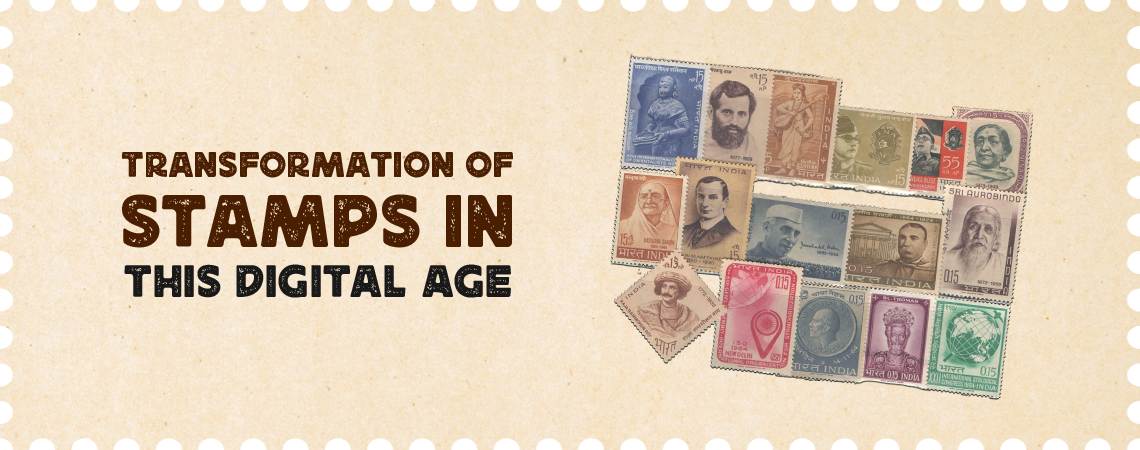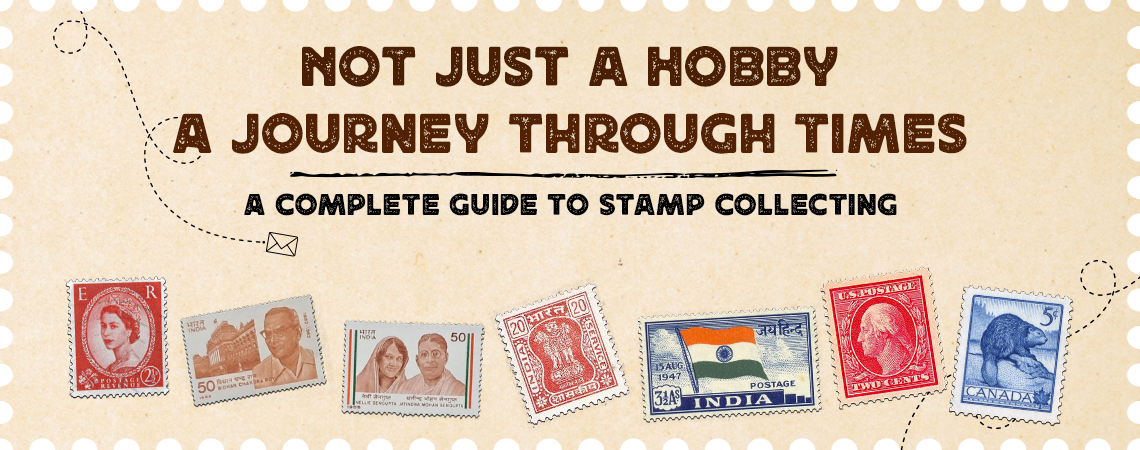Table of Contents
- Introduction
- The First Indian Stamp (1852)
- World’s Most Iconic Stamp (1854)
- End of the Classical Period in 1857
- High Value Stamp (1895)
- Commemorative Sets (1931)
- Silver Jubilee Stamp of King George V (1935)
- Pictorial Stamps (1937-40)
- India Becomes a Domain (1947)
- Count on Sobhaphilia for Exquisite Collection
Introduction
In this age of technology, where individuals are glued to their mobile screens, philately continues to be an engaging and rewarding hobby. Despite the rise of digital entertainment, the charm of collecting stamps, tiny pieces of history and art, remains timeless.
With changing times, the ways to acquire stamps have also evolved. Today, online stores for stamp collectors have become increasingly popular, offering easy access to rare and modern stamps alike. Be it browsing online or visiting traditional stamp fairs and local dealers, collectors now have multiple avenues to build their collections.
Much like India itself, the philately of India is hugely diverse, endlessly fascinating, and surprisingly accessible to anyone willing to explore. However, due to its vast scope and rich history, it may initially seem daunting to a collector relatively new to stamp collecting. This guide aims to help you navigate that journey. Starting from the first Indian stamp and tracing the evolution of Indian philately up to 1947.
The First Indian Stamp (1852)
The first India stamps, in-fact the first stamps in the entire continent of Asia was termed ‘Scinde Dawks’, three stamps, each of ½ anna value. It was issued in the year of 1852 for local usage in the erstwhile, Sind province.
These stamps rank as classified and one of the most desirable of all ‘classic’ issues, not for the rarity, but for the unusual method of production, being imprinted either colorlessly i.e., white, in blue ink or on a red sealing wax wafer.
World’s Most Iconic Stamp (1854)
One of the world’s most iconic stamps, the 4a blue and red stamp became the stamp for the entire country in 1854. Stamps printed in more than a single color were still unusual in 1854. The desirability of 4a turned out to be a perfect example of grace and imperialism with the blue portrait of Queen Victoria inserted in relation to the frame.
More than 150 years later there are only 28 examples of the 4a ‘Inverted Head’ known to collectors.
End of the Classical Period in 1857
The classical period of India philately ends with the suppression of the Indian rebellion of 1857, after which the Crown assumed direct administration of the country from the British East India Company. Within the 1860-1902 umpteen number of stamps were issued, featuring the portrait of Queen Victoria, who later assumed the title Empress of India in 1877.
All stamps were printed by De La Rue typography. These stamps made a commendable first foray into Indian stamps, as they were quite affordable and readily available. They were tailored to build a special collection memoir for a philatelist.
Fun Fact– De Ra Rue is a company with a long history of printing postage stamps. They were the first to produce surface-printed postage stamps for Great Britain and have printed stamps for a lot of countries worldwide.
In 2012, they printed stamps for the Queen’s Diamond Jubilee. More recently in 2025, De La Rue was acquired by Atlas holdings and delisted from London Stock Exchange.
Searching for Rare Indian Stamps to Add to Your Collection?
ExploreHigh Value Stamp (1895)
In the year 1895, British India issued high-value postage stamps. Why high value? These stamps featured a three-quarter portrait of Queen Victoria by artist Henrich Von Angeli. These stamps were defined as Angeli stamps.
They were notable for the mention of denominations of 2,3 and 5 Rupees. This is quite a productive set and is highly sought after by collectors. For exceeding the value of Rs.5 these mark a milestone in Indian postal history.
Commemorative Sets (1931)
These stamps were issued in 1931 to mark the inauguration of New Delhi as capital of British India. A set of six stamps, designed by W. Barr and printed in offset lithography featuring promising landmarks of the new city.
- What the stamps featured:
- Purana Qila
- King George V image overlaying the secretariat
- Secretariat
- Council House (Now parliament house)
- Viceroy’s House (Now house the India president)
- War Memorial Arch (Now India Gate)
Silver Jubilee Stamp of King George V (1935)
The silver jubilee of King George V in 1935 was commemorated with a special issue of postage stamps across the empire. In India a unique set of seven stamps was released on May 6th 1935. It featured special landmarks across the wonderful nation. These stamps were part of the broader initiative to celebrate the 25th year in the British crown.
Monuments featured:
- Golden Temple
- Gateway of India
- Victoria Memorial
- Rameswaram Temple
- Jain Temple (Calcutta)
- Taj Mahal
Pictorial Stamps (1937-40)
After George the V, came King George the VI. Definitive issues were published during this phase. What exactly is a definitive issue? It refers to the series of postage stamps issued in British India featuring King George VI. This definitive issue of significant interest for philatelists for its historical importance.
India Becomes a Domain (1947)
India became a dominion within the British empire and a couple of years later a completely independent Republic. For a lot of individuals, 1947 represents the commencement of ‘modern’ India in terms of stamp collection.
The stamps of contemporary India are printed in quantum figures. Indians still write letters in this age of technology, maybe the number is limited but it is not obsolete. In all probability India is the world’s biggest user of postal stationery. Indian stamps have great variety and contemporary stamps are still widely collected and discussed by the collecting fraternity in India.
Looking to Enhance Your Stamp Collection?
Shop NowCount on Sobhaphilia for Exquisite Collection
Count on Sobhaphilia for an exquisite collection of rare and historic stamps that speak to your passion. Are you a seasoned philatelist or just starting out? The curated selection has something special for everyone. Discover stamps from across eras and regions, all just a click away.
Buy postage stamps online with ease, authenticity, and trust. At Sobhaphilia, we don’t just sell stamps, we help you build a timeless collection worth cherishing.



